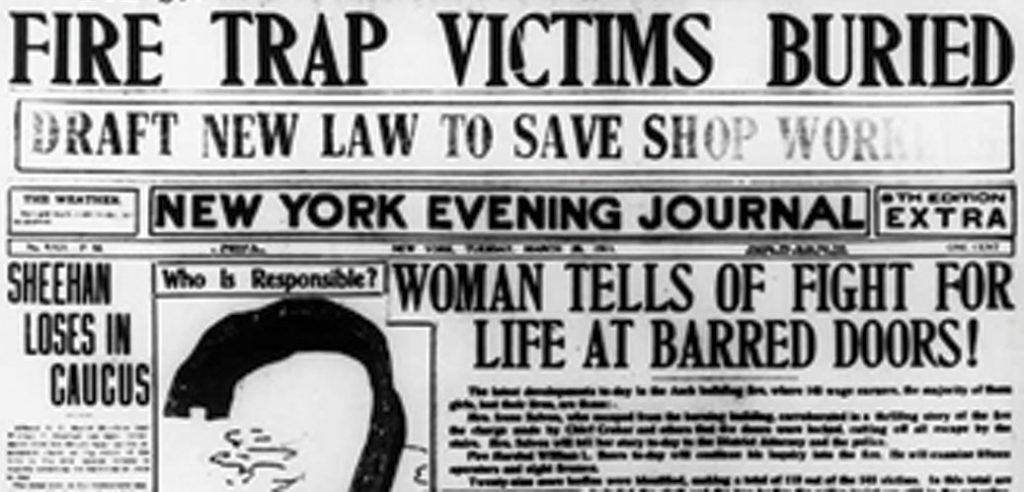The Triangle Shirtwaist Factory fire in New York City on 25 March 1911 was the deadliest industrial disaster in the history of the city, and one of the deadliest in US history.
The fire led to the death of 146 garment workers – 123 women and 23 men – who died from the fire, smoke inhalation, or falling or jumping to their deaths. Most of the victims were recent Italian and Jewish immigrant women aged 14 to 23. The factory was located on the top 3 floors of the 10 storied Asch Building, at 23–29 Washington Place in Manhattan. The owners, Max Blanck and Isaac Harris, had locked the doors to the stairwells and exits to prevent workers from taking unauthorized breaks and to reduce theft. This made many workers jump from the high windows to escape from the burning building.

Added to this Blanck and Harris were notorious for the low wage they paid to their workers – a mere $15 a week – despite working 12 hours a day, every day. When the International Ladies Garment Workers Union led a strike in 1909 demanding higher pay and shorter and more predictable hours, Blanck and Harris’ company was one of the few manufacturers who resisted, paying off police to imprison the striking women and politicians to look the other way.
Speaking at a Memorial meeting for the deceased workers, Rose Schneiderman, a prominent socialist and trade union activist, on 2 April 1911 said:
“I would be a traitor to these poor burned bodies if I came here to talk good fellowship. We have tried you good people of the public and we have found you wanting…
We have tried you citizens; we are trying you now, and you have a couple of dollars for the sorrowing mothers, brothers and sisters by way of a charity gift. …
This is not the first time girls have been burned alive in the city. Every week I must learn of the untimely death of one of my sister workers. Every year thousands of us are maimed. The life of men and women is so cheap and property is so sacred. There are so many of us for one job it matters little if 143 of us are burned to death. …
Public officials have only words of warning to us—warning that we must be intensely peaceable, and they have the workhouse just back of all their warnings. The strong hand of the law beats us back, when we rise, into the conditions that make life unbearable. …
I can’t talk fellowship to you who are gathered here. Too much blood has been spilled. I know from my experience it is up to the working people to save themselves. The only way they can save themselves is by a strong working-class movement.”
More than a 100 years later, we still have Rana Plaza which is reminiscent of the Triangle fire, we still have Unchahar, we still have workers dying every day across the subcontinent in factories, in mines, in construction, in manual scavenging and elsewhere and we are still fighting for a safe workplace.
